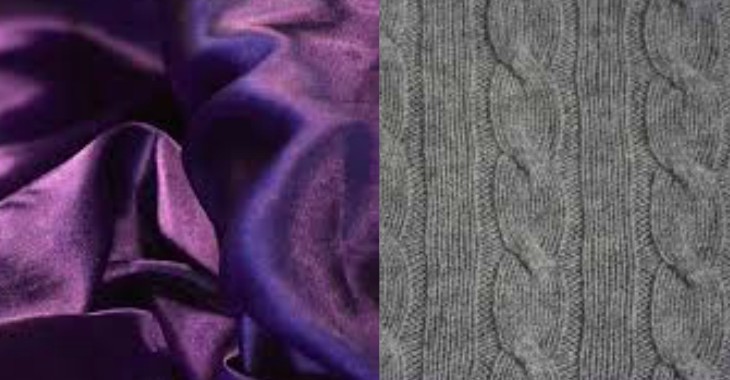Understanding the intricacies of cashmere and silk and how manufacturers measure their quality
Silk and cashmere are both stunning fabrics – sublimely soft and luxurious. However, although both are very beautiful, some of their properties have caused problems during their production and sale. Here we take a deeper look into how silk and cashmere are now sold by weight and methods adopted by traders over the years to overcome these problems and guarantee quality.
Silk – one of the oldest traded fabrics and one of the most luxurious. It has been customary for textiles to be sold by their thread count, but the fine threads of silk made this problematic as a measure of fabric quality. Struggling to measure and maintain the quality of the items on sale, traders ended up having to sell silk by weight per area.
Similarly, thee yarn from cashmere was historically purchased by the number of ply. However, as manufacturing techniques have developed this has become a less reliable measure. The introduction of selling yarn by weight per length meant more accurate and consistent sales could take place.
Today silk is measured in Momme, whilst the yarn from cashmere is gauged in mass per unit length.
Weighing silk
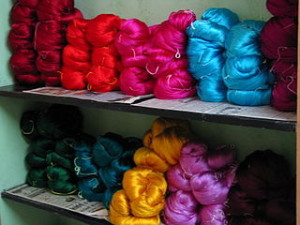 Introduced by the Japanese, the Momme is the unit of measurement for silk fabric texture; the higher the thread count the better the quality. As the adopted standard for measuring the weight of silk, Momme weight more accurately defines the actual weight of 100 yards of silk, 45 inches wide, in pounds. If a piece of fabric weighs 20 pounds then you could expect the Momme weight of that silk would be around 20.
Introduced by the Japanese, the Momme is the unit of measurement for silk fabric texture; the higher the thread count the better the quality. As the adopted standard for measuring the weight of silk, Momme weight more accurately defines the actual weight of 100 yards of silk, 45 inches wide, in pounds. If a piece of fabric weighs 20 pounds then you could expect the Momme weight of that silk would be around 20.
There are many different types of silk, such as Crepe de chine, chiffon and smooth satin. The strongest fabric of them all is raw silk. There are two main categories of silk: wild and cultivated, the latter forming the majority of the world’s traded silk. Each type possesses different qualities as well as its weight; examples of how the Momme can vary between types of silk can be seen here:
- Habutai silk – 5 to 16 Momme weight
- Raw silk – 35 to 40 Momme weight
- Chiffon – 6 to 8 Momme weight
- Gauze – 3 to 5 Momme weight
The silk Momme weight reflects the price and quality you can expect from the fabric – generally the higher the Momme weight is, the better the quality, the more resilient the fabric is and the more you’ll have to pay. However, you can only really make such comparisons within any particular silk type as it makes no allowances for the finish and feel of any final product.
Silk sheets
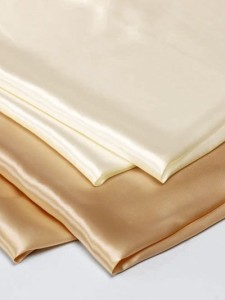 Silk sheets need to feel soft but also have to be strong and withstand regular washing and ironing. These types of sheet usually have a Momme weight of 12 to 19. Clothing, such as our Essential Pure Silk Shirt, usually weighs less, around 8 to 12 Momme. And a thicker silk, like the type used to make a long-lasting suit, can weigh about 22 Momme.
Silk sheets need to feel soft but also have to be strong and withstand regular washing and ironing. These types of sheet usually have a Momme weight of 12 to 19. Clothing, such as our Essential Pure Silk Shirt, usually weighs less, around 8 to 12 Momme. And a thicker silk, like the type used to make a long-lasting suit, can weigh about 22 Momme.
For silk sheets a Momme weight of 12 to 19 is considered good quality, but if you are after truly luxurious bedding that is also strong and long lasting you should invest in a Momme weight of with 16 to 19.
Many think of silk sheets as a luxurious purchase that only the very rich can afford, however although they remain relatively expensive there are some more affordable options, with slightly lower Momme weight, for those looking to add a bit of luxury to their life.
Cashmere
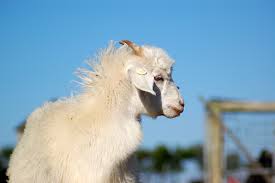 Cashmere is another luxury product with a trading history that goes back a long way. Cashmere originates from the soft undercoat of special goats bred to produce this luxurious type of wool. Producing a cashmere jumper requires the fleece from more than two goats to make, and such a garment made of 100% cashmere could easily cost more £100.
Cashmere is another luxury product with a trading history that goes back a long way. Cashmere originates from the soft undercoat of special goats bred to produce this luxurious type of wool. Producing a cashmere jumper requires the fleece from more than two goats to make, and such a garment made of 100% cashmere could easily cost more £100.
The goat’s fine soft winter undercoat needs to be separated from its normal year-round coat of coarse hair in order to get the cashmere. The separation process a very labour intensive one, it involves combing and sorting the strands by hand. Cashmere goats are usually bred in the mountains of northern China; temperatures regularly fall to as low -30 Celsius, in such conditions having a double-layered coat can come in very handy.
Types of cashmere: thickness, length and purity
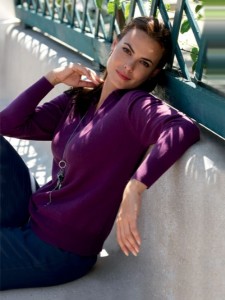 When cashmere yarn is assessed for quality the traders are interested in three criteria: thickness, length and purity of the source fibre. The quality of the coat can vary between the breeds of cashmere goat and the care taken during yarn production can also have an impact. Yarn used to be gauged with a ply number. However, as production techniques began to develop it became possible to produce even finer threads and the ply became a poor guide to quality. Using weight of cashmere proved to be a far more accurate method of measuring the fine cashmere threads.
When cashmere yarn is assessed for quality the traders are interested in three criteria: thickness, length and purity of the source fibre. The quality of the coat can vary between the breeds of cashmere goat and the care taken during yarn production can also have an impact. Yarn used to be gauged with a ply number. However, as production techniques began to develop it became possible to produce even finer threads and the ply became a poor guide to quality. Using weight of cashmere proved to be a far more accurate method of measuring the fine cashmere threads.
There is a range of weight options available for measuring cashmere; it can be done in ounces per yard of yarn, or in grams per metre of yarn. The class or yarn gauge of cashmere can also be used if a manufacturer wants to look specifically at the density of the finished cashmere item.
As with silk, a higher weight usually means better quality – the best cashmere has a high yarn weight; this can produce a garment with a tighter knit. How tightly the item is knitted is a strong indicator of its quality; jumpers, blankets and scarves made of cashmere with a tight knit will be more durable and less likely it is to become misshapen. The quality of cashmere is also dependent on the dying process – a garment that is yarn dyed rather than piece dyed means that the manufacturer has taken care during the garments production, this is also true if the garment does not readily ‘shed’ threads.
The beauty of both silk and cashmere is multi-faceted. Both have fine delicate fibres with their own metric, and both involve a complex and labour intense harvesting process. Often expensive, yet incredibly comfortable and wonderful to wear – silk and cashmere both deserve their title as two of the most luxurious fabrics in the world.

